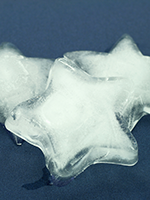The transition from section G to section GG on Oct. 1, 2023, also had a substantial impact on Quality Measures (QMs) and the Five-Star Quality Rating System. The Centers for Medicare & Medicaid Services (CMS) released a memo in September detailing the affected QMs and the impact on the Five-Star QM domain.
However, due to the delay from when data is collected and when it is publicly reported, the Five-Star ratings will not be impacted until the April 2024 Care Compare refresh. Until then, publicly reported QMs will be displayed based on data from before the transition to section GG. Effective with the April 2024 Care Compare refresh, QMs affected by the GG transition will be held constant (frozen) in the Five-Star QM rating.
Here are four key points about the freeze that nurse assessment coordinators (NACs) need to know to avoid getting frostbitten by this freeze:
- Although some measures are frozen, others will continue to thrive in April 2024.
Note that only 4 of the 15 measures used in the Five-Star QM rating will be frozen. The outcomes achieved during the January 2024 Care Compare refresh for those 4 measures will be held constant with the April 2024 refresh:
• Percent of Residents Who Made Improvements in Function (short-stay)
• Percent of Residents Whose Need for Help With Activities of Daily Living Has Increased (long-stay)
• Percent of Residents Whose Ability to Move Independently Worsened (long-stay)
• Percent of High-Risk Residents With Pressure Ulcers (long-stay)
These measures will display outcomes from Oct. 1, 2022, to Sept. 30, 2023, which does not include any data from after the transition from G to GG. And while these measures were left to freeze, the remaining 11 measures will continue to thrive, including those that had minor specification changes due to the GG transition. These measures will be updated with the April 2024 Care Compare refresh to display outcomes from Jan. 1, 2023, to Dec. 31, 2023, which includes data from both before and after the GG transition.
2. It’s not just a change in season in October 2024 for one measure.
Many will experience cooler weather in October, but one of the frozen measures will go through a bigger change. Rather than unfreezing the short-stay measure, Percent of Residents Who Made Improvements in Function, CMS will replace this measure with the new cross-setting functionality QM: Discharge Function Score. This Discharge Function Score measure is also used in the skilled nursing facility (SNF) Quality Reporting Program (QRP) starting with the fiscal year (FY) 2025 program year and will be used in the SNF Value-Based Purchasing (VBP) program with the FY 2027 program year. The specifications for this measure are located in the Skilled Nursing Facility Quality Reporting Program Measure Calculations and Reporting User’s Manual v5.0.
3. Two of the frozen measures will emerge like butterflies in January 2025.
When a caterpillar undergoes its metamorphosis, it first forms a chrysalis and then later emerges as a butterfly. Two of the Five-Star QMs will undergo a similar transformation. During the freeze, like a chrysalis, the structure of these measures will change greatly. When they are ready to unfreeze in January 2025, the emerging measures will not be comparable with the previously frozen measures.
One of the measures, Percent of Residents Whose Ability to Move Independently Worsened,will transition to a measure that only includes ambulatory residents. The other measure, Percent of High-Risk Residents with Pressure Ulcers,will remove the high-risk qualifier and include all pressure ulcers for long-stay residents. Here’s a description in tabular form of the transition of these measures and key changes:
| Measures current through April 2024 freeze | Measures effective Oct. 1, 2023, and will replace frozen measures in January 2025 | Key changes |
| Percent of Residents Whose Ability to Move Independently Worsened | Percent of Residents Whose Ability to Walk Independently Worsened |
|
| Percent of High-Risk Residents With Pressure Ulcers | Percent of Residents With Pressure Ulcers |
|
4. January 2025 will be looking at today.
In January 2025, the measures will unfreeze, except for the short-stay function measure. Although this date may seem too distant to think about now, the data that will be displayed publicly is the data NACs are submitting today. This Care Compare refresh will include data from Oct. 1, 2023, to Sept. 30, 2022, which means management of the affected measures should have already started so as to achieve the desired QM outcomes that will be displayed in January 2025.
Conclusion
It may take some time to fully understand all the nuances that changed and will be changing with the QMs. However, focusing on clinical systems that drive the desired outcomes and the accuracy of the Minimum Data Set (MDS) assessments will help ensure that the facility’s quality efforts are maintained during the freeze.
This AAPACN resource is copyright protected. AAPACN individual members may download or print one copy for use within their facility only. AAPACN facility organizational members have unlimited use only within facilities included in their organizational membership. Violation of AAPACN copyright may result in membership termination and loss of all AAPACN certification credentials. Learn more.

